Rules ver. 1.1
1. Reference Positions and Datums:
Longitudinal = X axis (+X = towards the rear)
Lateral/transverse = Y axis (+Y = towards the left when viewed from the front)
Vertical = Z axis (+Z = up)
FWCL = Front wheel centerline, RWCL = Rear wheel centerline
The reference plane is Z=0, which is coincident with the lowest surface of the allowed bodywork, excluding the floor plank. The wheelbase of the car is fixed at 3600mm with the FWCL at X=0 and the RWCL at X=3600mm.

2. Submission Requirements
2.1 An entry should be a single compressed archive file (ZIP etc) named using the format “<team>_<round>_<version>”. It must contain:
- A directory named “special_bc”:
- (rule 7) One engine inlet surface, with a filename starting with “engineIn”
- A directory named “monitoring_surfaces”:
- (rule 6) Each heat exchanger monitoring surface as a separate stl-file (front face of heat exchanger translated rearward along its normal by 30mm)
- A directory named “porous_media”:
- (rule 6) Each (left and right hand sides) heat exchanger volume as a separate stl file
- A directory named “high_res_surfaces” (rule 9.2).
- Directories “frt_suspension” and “rr_suspension” (rule 14.3).
- A directory named “vehicle_body”: All remaining bodywork.
2.2 These parts should be exported as separate stl files with 1 unit = 1m. Note: files must be saved with lower case suffix .stl (NOT .STL).
2.3 A full symmetric model must be submitted. Except where specified otherwise, any dimensions given apply to the entire car.
2.4 A plain text file must be included in the archive to specify the offset for the following parts compared to their position as supplied in the parts file, even if they have not been moved, stating the following:
- Vehicle rake in deg
- Vehicle ride height
- WIP: SIP positions
2.5 Only the parts specified in rule 2.1 and the text file in rule 2.4 should be included. No other guide parts should be submitted. Internal construction geometry must not be part of the submission. The combined size of the stl files (before compression) must be below 160MB for ASCII stl, or below 40MB for binary stl.
3. Mandatory Supplied Parts
3.1 The following supplied parts, in their supplied position, and without modification must be used in the CFD model, based on the supplied CAD file MVRC_2024_CAD_Parts_V*:
- MAND_AIS_MVRC_2024_*
- MAND_BATTERY_MVRC_2024_*
- MAND_ENGINE_MVRC_2024_*
- MAND_Exhaust_MVRC_2024_*
- MAND_Exhaust_Out_MVRC_2024_*
- MAND_FRT_SUSP_MVRC_2024_*
- MAND_FUEL_CELL_MVRC_2024_*
- MAND_Gearbox_MVRC_2024_*
- MAND_Halo_MVRC_2024_*
- MAND_Helmet_MVRC_2024_*
- MAND_Mirrors_MVRC_2024_*
- MAND_Plank_MVRC_2024_*
- MAND_RR_SUSP_MVRC_2024_*
- MAND_Safetycell_MVRC_2024_*
- MAND_WHL_FRT_MVRC_2024_*
- MAND_WHL_RR_MVRC_2024_*
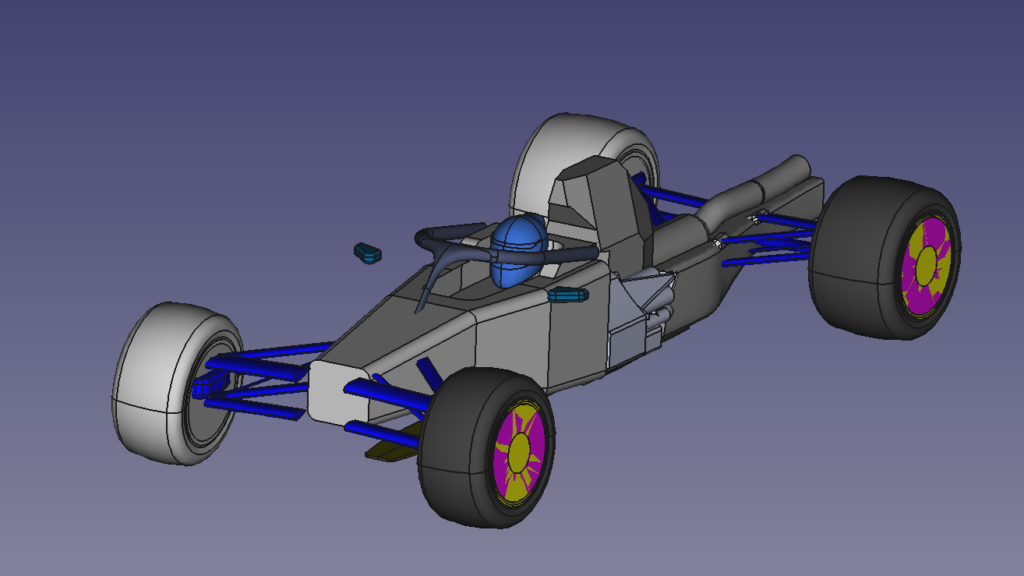
4. Supplied Volumes
- RV_FLOOR_BODY_MVRC_2024_*
- RV_FLOOR_EDGE_MVRC_2024_*
- RV_FLOOR_FENCE_MVRC_2024_*
- RV_FRT_SUSP_MVRC_2024_*
- RV_FRT_WHL_DEFL_MVRC_2024_*
- RV_FRT_WING_MVRC_2024_*
- RV_Mirror_Strut_MVRC_2024_*
- RV_RR_SUSP_MVRC_2024_*
- RV_RR_WHL_Winglet_MVRC_2024_*
- RV_RR_WING_MVRC_2024_*
- RV_RR_WING_PROFILES_MVRC_2024_*
- RV_Vehiclebody_MVRC_2024_*

5. Supplied Reference Surfaces
- RS-02-FLOOR-PLAN_MVRC_2024_*
- RS-04_FLOOR_REAR_MVRC_2024_*
- RS-23-FWEP-BODY_MVRC_2024_*
- RS-24-FW-PROFILES_MVRC_2024_*
- RS-31-RW-RWEP_MVRC_2024_*
6. Heat Exchangers
6.1 There must be one heat exchanger on each side of the car, meeting the following rules:
- 6.1.1 Each heat exchanger is made up of a single planar shape extruded a distance of 60mm in a direction normal to its front face.
- 6.1.2 The planar shapes may be rotated around the Y-axis only.
- 6.1.3 Each shape must be at least 180,000mm2 in area.
- 6.1.4 The heat exchanger extrusion must be located entirely inside the bodywork volume and must not intersect any bodywork or templates, but it must touch the bodywork along its edges to provide a realistic mounting to the body of the car.
- 6.1.5 As specified in rule 2.1, the following parts must be included with the submission as separate stl files:
- Each 60mm extrusion
- A copy of each planar shape translated rearward along its normal by 30mm (i.e. the mid-surface of the extrusion)
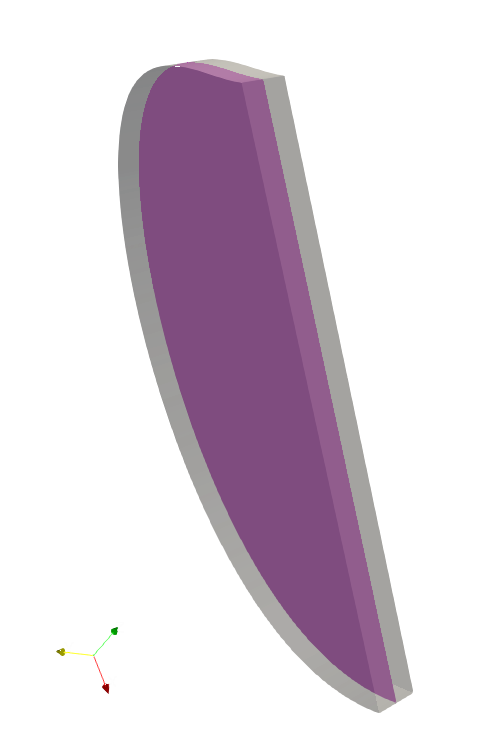
7. Power Unit Inlet
7.1 One engine inlet surface is required to be located above and behind the driver’s helmet on the car centreline, which:
- 7.1.1 Must be one planar surface with an area of at least 15,000mm2.
- 7.1.2 Must be at least 50mm high/wide at any point (measuring perpendicular to the boundary).
- 7.1.3 Must be entirely located within the bodywork volume at a point at least 1880mm rearward of the FWCL, and at least 700mm above the reference plane.
- 7.1.4 The engine inlet inner template is the volume formed by an extrusion of the inlet surface rearward along its normal for a distance of 100mm. This template must be entirely enclosed in bodywork and must not intersect any other parts or templates with exception of the engine intake plenum.
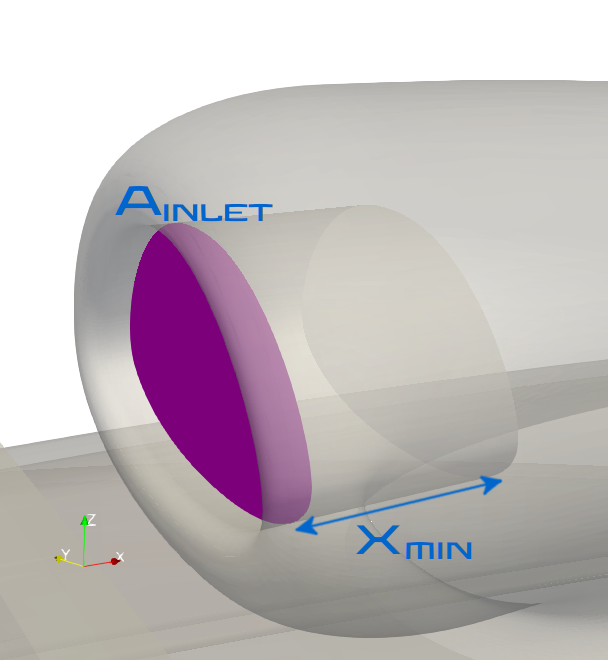
8. Power Unit Exhaust
8.1 The exhaust is made of two mandatory parts, MAND_Exhaust_MVRC_2024_* and the surface MAND_Exhaust_Out_MVRC_2024_*.
8.2 The volume inside of the tailpipe between exhaust out and the end of the exhaust pipe must remain unobstructed
9. Bodywork – General
9.1 All bodywork must be fully contained within the supplied legality volumes.
9.2 Parts inside of the volumes:
- RV_FLOOR_FENCE_MVRC_2024_*
- RV_FRT_WING_MVRC_2024_*
- RV_RR_WING_MVRC_2024_*
must be included into the high_res folder.
9.3 No part of the bodywork may be less than 10mm thick. See appendix 1 for the exceptions to this rule.
9.4 The provided suspension parts may intersect the bodywork.
9.5 All body parts, including the supplied parts, must be capable of forming a single body, connected by parts meeting rule 9.3. i.e. there should be no floating parts.
9.6 When intersected with any X-plane, body work ahead of FWCL (X=0), not inside of RV_FRT_WING_MVRC_2024_*, must produce only one continuous closed section.

9.7 An intersection of an X-plane with parts inside of RV_Vehiclebody_MVRC_2024_* at X=-550mm must produce a face with a minimal area of 44,000mm².
10. Front Wing
- 10.1 Front Wing is everything inside of the volume RV_FRT_WING_MVRC_2024_*
- 10.2 Every cross section in the Y-plane inside of the volume RV_FRT_WING_MVRC_2024_* must produce no more than four closed sections.
- 10.3 The rearmost point of any such section must be visible when viewed from below.
- 10.4 With exception of the rearmost closed section, the rearmost point of the remaining sections must not be visible when view from above.
- 10.5 When viewed from below, the surface 24_RS-FW-RS-24-FW-PROFILES_MVRC_2024_* must not be visible.
- 10.6 When view from the side, the surface RS-23-FWEP-BODY_MVRC_2024_* must not be visible.
11. Rear Wing
- 11.1 All body work inside of the volume RV_RR_WING_MVRC_2024_* is Rear Wing.
- 11.2 Rear Wing bodywork inside of the volume RV_RR_WING_PROFILES_MVRC_2024_* must:
- 11.2.1 Contain exactly two sections in any Y-plane.
- 11.2.2. The rearmost section must have a chord smaller than the first.
- 11.3 The rear wing must be attached with at least three sections with one or two such sections inside of the volume RV_RR_WING_MVRC_2024_* attaching to the gearbox.
- 11.4 When view from the side, the surface RS-31-RW-RWEP_MVRC_2024_* must be fully obscured.
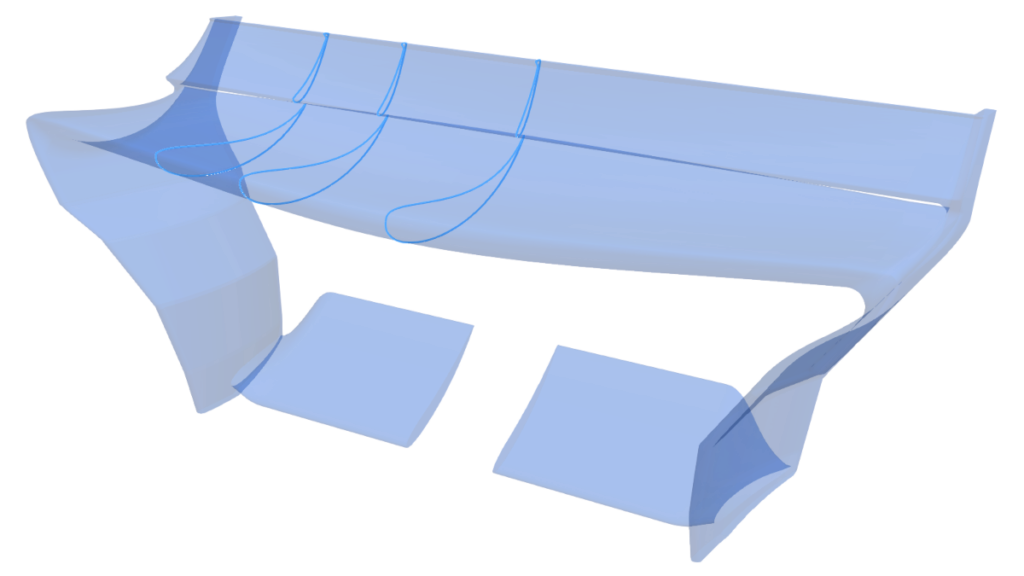
12. Floor
- 12.1 Body work inside of the volume RV_FLOOR_BODY_MVRC_2024_* is Floor.
- 12.2 Floor must:
- 12.2.1 Entirely obscure RS-02-FLOOR-PLAN_MVRC_2024_* when viewed from below.
- 12.2.1.1 Elements of Floor inside of RV_FLOOR_EDGE_MVRC_2024_* are allowed to leave visible gaps to RS-02-FLOOR-PLAN_MVRC_2024_*.
- 12.2.2 Entirely obscure RS-04_FLOOR_REAR_MVRC_2024_* when viewed from the side.
- 12.2.1 Entirely obscure RS-02-FLOOR-PLAN_MVRC_2024_* when viewed from below.
- 12.3 When intersected with any X-plane, it must only produce only one continuous closed section with all parts of the section either visibly from above or below.
- 12.4 When intersected with any Y-plane, the Floor must only produce only one continuous closed section with all parts of the section either visibly from above or below.
- 12.4.1 Inside of RV_FLOOR_EDGE_MVRC_2024_*, multiple sections are allowed for Y-plane intersections.
- 12.5 when viewed from below, Floor must be the lowest part of the car within the area defined by RS-02-FLOOR-PLAN_MVRC_2024_*.
- 12.6 After these requirements are met, additional parts may be added to the volume inside of the volume RV_FLOOR_FENCE_MVRC_2024_*:
- 12.5.1 Up to four fences are permitted per side of the car.
- 12.5.2 The fences must be a part extruded purely in Z-direction.
- 12.5.3 The fences have to be a separate part.
- 12.5.4 The fences must have a constant thickness of 10mm
13. Side Mirrors
- 13.1 The mandatory part MAND_Mirrors_MVRC_2024_* must be attached to the car by the mirror strut which when cut either in Y- or Z-direction only produces one convex section.
- 13.2 The mirror strut must lie inside of the volumeRV_Mirror_Strut_MVRC_2024_*
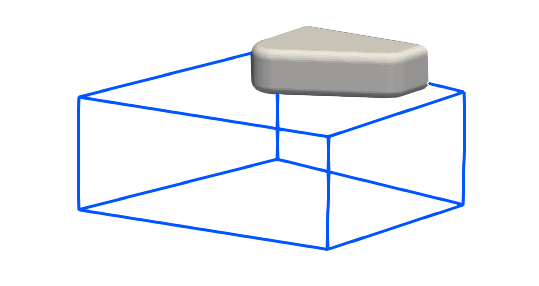
14. Front and Rear Suspensions
- 14.1 Parts MAND_FRT_SUSP_MVRC_2024_* and everything inside of RV_FRT_SUSP_MVRC_2024_* and RV_FRT_WHL_DEFL_MVRC_2024_* is frt_suspension.
- 14.2 Parts MAND_RR_SUSP_MVRC_2024_* and everything inside of RV_RR_SUSP_MVRC_2024_* and RV_RR_WHL_Winglet_MVRC_2024_* is rr_suspension.
- 14.3 frt_suspension must be placed into the submission folder “frt_suspension”, while rr_suspension must be placed into the submission folder “rr_suspension”.
15. Vehicle Rake & Ride Height
- 15.1 With the car constructed in accordance with rules 1 to 12, above, the entire car, excluding wheels , may be be rotated a maximum of -2.0 degrees (nose down), with the center of rotation being located at X = 0mm, Z = 0mm. After the rotation, the lowest part of the car, excluding suspension parts and wheels, must not be closer than 20mm the the wind tunnel ground.
- 15.2 The competitor must nominate the number of degrees of vehicle rake in the supplied text file.
- 15.3 The competitor must nominate the amount of vehicle ride height adjustment after the rake transformation in mm in the supplied text file.
Appendix 1: 10mm thickness
A1.1 For front and rear wing parts, each wing element should be at least 10mm thick at some part along its chord in any Y-section. Problems may be encountered at the CFD meshing stage if the thickness remains very low over a long distance at the rear of the chord.
A1.2 For thin bodywork elements (plates, strakes / fences), once the 10mm thickness requirement is met, a sharp trailing edge and rounded leading edge (roughly circular in shape) are permitted. The 10mm thickness should be maintained over approximately ⅔ of the length or more, and must be maintained in any load-bearing region.
A1.3 For any gurney flap / wickerbill, a triangular section is permitted if the base width is at least 10mm and the height is no more than 5 times the base width.
A1.4 Supplied mandatory bodywork may be below 10mm thick.
Appendix 2: airflow requirements for inlets and outlets
| Engine Intake |
|
| Engine Exhaust |
|
| Cooling |
|
Violations of the engine intake and engine exhaust requirements will lead to a DNF. Not meeting cooling requirements leads to reduced engine power and to DNF below 50% of required value.
Appendix 3: Lap Time Prediction
Lap time prediction shall be performed by using Max Taylor’s new Lap Time Simulator. using the aerodynamic coefficients and characteristics of each car which are calculated by the CFD analysis program MantiumFlow.
Appendix 4: Realistic Designs
Structurally unrealistic designs will be judged to be illegal.
